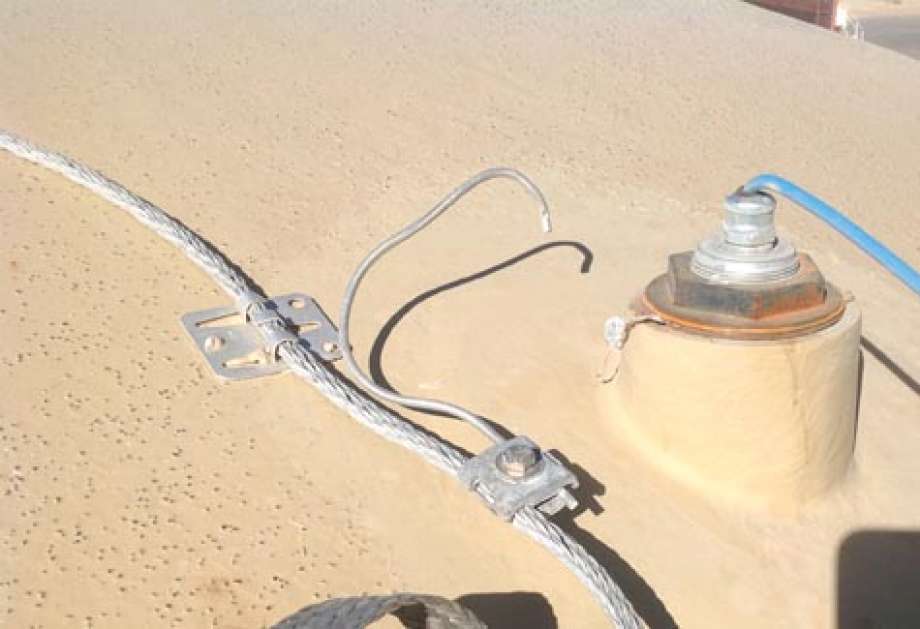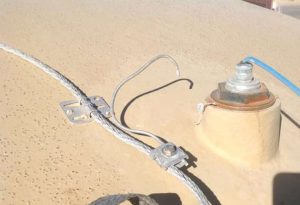If you buy a truck and disconnect the brake lines, the truck will crash.
If you lightning-protect your site with Lightning Master, then disconnect or move the wires—well, you get the picture.
All too often, say the experts at Lightning Master, this is what can happen on an Oil Patch site loaded with flammable substances. More than once Lightning Master has installed a carefully-designed lightning protection system and “handed the keys” to the operator.
Upon routine inspection, Lightning Master finds that something has been moved or added—a new tank, an additional pipeline—and not added or reconnected to the existing lightning system. These changes to the site are normal and necessary, but so is making sure the lightning protection is still effective.
A recent case in point saw an inspection reveal a problem, which was reported to the operator. In this case, the operator did not take action or ask Lightning Master technicians to fix the issues. Shortly thereafter a lightning strike set a fire that destroyed the location.
Another case saw a client disconnect the bonding wire in order to work on a sensor. Forgetting to reconnect, the client left the bonding wire hanging, about six inches from the sensor and very close to the thief hatch, which has the potential to release a highly combustible vapor. In the event of a lightning strike this could create an arc like a giant spark plug, with potentially disastrous results.
Out of thousands of tanks they’ve protected over the years and, overall, in several industries, the only times Lightning Master clients have had problems was when the client altered something after the installation and failed to respond to Lightning Master’s report that there was a problem.
Changes on a site are natural, normal and necessary. What takes a bit of extra thought is for the site manager or the safety person to call Lightning Master to come do an inspection.
So it’s really simple. LMC will do the inspection and give you a report and a bid on what, if anything, they need to do to make sure your site is adequately protected.
While spring and summer are the seasons when lightning is most likely, a thunderstorm can come up almost any time of year—and it only takes one well-placed lightning strike to cause costly damage, risk lives and delay production.
The best idea is to have Lightning Master scheduled for inspection and maintenance, at least annually. Additional inspections can be scheduled after site changes. It’s also a good idea to log all site changes so Lightning Master technicians can start by evaluating those areas.
Almost any lightning disaster can be averted with a properly installed and maintained system. Talk to Lightning Master about that this week. [email protected]
Published by Paul Wiseman, MRT



